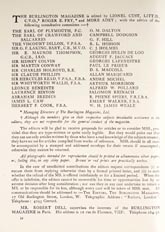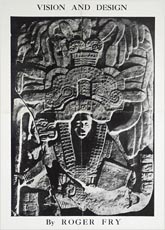|
Personal life |
Fry's ideas |
Fry and modern art |
Fry as art critic
Fry as art critic

Fry was one of the most influential art historians and critics of his generation.
In the early years his writings focused on the old masters, but he grew increasingly interested in contemporary art, particularly Post-Impressionism, and it is for his ideas and
writing about the development of modern art that he is best known.
He made his first move into art criticism with a review of George Moore's book Modern Art for the Cambridge Review in 1893.
In 1894 he began lecturing on Italian art for the Cambridge Extension Movement and he continued to lecture throughout his career, in later years presenting a series of radio
programmes.
Sir Michael Sadler, who attended a lecture given by Fry at the Grafton Gallery during the first Post-Impressionist exhibition, observed:
| He is a good lecturer, conversational and easy in style without being impertinent or familiar.
Amusing and not aggressive but holding his ground well against an adversary. |

Sir Michael Sadler, notes on a lecture given by Roger Fry, 9 Jan 1911 |
|

The Burlington Magazine
credits page
© The Burlington Magazine,
Vol. 29, p.iv. |

Leaflet advertising Vision and
Design by Roger Fry
Used by permission of the
Random House Group Limited |
With publication of his first book Giovanni Bellini in 1899, Fry's reputation was sealed and he became part of the established art world.
He regularly contributed articles and criticism to the magazines Monthly Review and The Athenaeum and in 1903 he was involved in the founding of
Burlington Magazine, acting as joint editor between 1909-18, and making it into one of the most important art magazines in Britain.
By 1906 Fry's international reputation was such that he was offered the post of Curator of Paintings at the Metropolitan Museum of Art in New York.
He remained there until 1910, when his post was terminated after a dispute with the chairman of trustees, J. Pierpont Morgan.
Fry re-edited and updated a collection of his best articles and writings in his book Vision and Design which was published in 1920.
As well as Western art, the book examined the use of form and aesthetics in ethnic art from Africa, America and Asia.
It was a great success, reinforcing his position as England's leading critic and is still recognised as an extremely influential work in the development of modernist theory.
During the last years of his life he devoted much of his time to writing. A second collection of his articles Transformations was published in 1926, followed by a monograph on
CÚzanne, the first major work on the artist, in 1927.
See the further information page for more publications by Roger Fry.
In 1933 Fry was offered the post of Slade Professor at Cambridge and began a series of lectures on the nature of art history that he was never to complete.
The text for the lectures was published after his death in 1939 as Last Lectures. |
|
